Fabricating a customised semi-permanent restoration
Indirect restorations are used regularly in prosthetic dentistry and can be differentiated in various ways. One of the areas in which they can be differentiated is their retention period in the mouth.
On the one hand, there are temporary measures worn for a short period of time which are used to protect the underlying tooth until the final restoration is inserted and, on the other, there are long-term temporaries, often used in the treatment of teeth which might be at risk. These are either used only to guarantee the prognosis of the tooth to be restored with a crown for a certain period, often three to six months, or in cases where a risky situation is essentially undergoing ‘final’ restoration.
Thus, figuratively speaking, these assume the same functions as a final restoration, which increases the demands placed on the materials used when it comes to marginal seal, resilience and long-term stability. This gives rise to the question of whether long-term temporaries can remain in the mouth for an unlimited period in special indication groups.
In this article, a clinical example is used to illustrate the use of the innovative new crown composite (LuxaCrown) for the fabrication of a long-term temporary with an as yet undefined lifespan. The materials used (StatusBlue, LuxaPost, LuxaCore Z, LuxaCrown, Luxatemp-Glaze & Bond) are manufactured by DMG (DMG, Hamburg).
Clinical case
A 63-year-old male patient presented himself at our dental practice with significant pain in tooth 46 (Fig 1).
Following examination and diagnosis, the tooth received endodontic treatment. In this specific case, we decided to remove the existing crown following a preliminary impression with A-silicone StatusBlue, in order to allow as bacteria-free an endodontic treatment as possible (Fig 2). This was to prevent any compromise to the subsequent endodontic result due to an insufficient marginal fit and any resulting coronal leakage.
The plans for the final restoration included a customised semi-permanent chairside restoration in a direct procedure using the innovative crown material LuxaCrown. This material makes it possible to restore the tooth for the long-term without compromising on the marginal fit, resilience, shade stability or aesthetic reconstruction.
Following successful root canal treatment, the severely damaged tooth was reconstructed using an adhesive post and core (LuxaPost and LuxaCore Z) before undergoing standard preparation for incorporation of a single crown (Figs 3 and 4).
After checking for undercut areas the core was isolated with Vaseline.
The impression produced with StatusBlue was then filled with LuxaCrown (Fig 5) and the tray was repositioned in the patient’s mouth 30 seconds afterwards, at the latest. During the elastic phase of the crown material, which spans a period between 90 seconds and two minutes 20 seconds, the impression must be removed. The semi-permanent restoration achieved its final hardness after five minutes.
After removing the crown from the impression (Fig 6), the rough excess was removed with crown shears and the crown was placed on the core to check the fit.
Afterwards, final finishing was performed extra-orally using stones and rubber polishers as well as polishing brushes (Figs 7 and 8).
Finally, the crown was cemented with Ketac Cem according to the manufacturer’s instructions.
The intra-oral result was more than satisfactory as far as the fit and aesthetics were concerned (Figs 9 and 10).
- Fig 1 – Intra-oral initial situation
- Fig 2 – StatusBlue impression
- Fig 3 – After root canal treatment
- Fig 4 – After post and core build-up
- Fig 5 – Filling the impression with LuxaCrown
- Fig 6 – Removing the LuxaCrown from the impression
- Fig 7 – Final polishing with a rubber polisher
- Fig 8 – Final polishing with a polishing brush
- Fig 9 – LuxaCrown intra-oral, occlusal view
- Fig 10 – LuxaCrown intra-oral, side view
About the products
The complete DMG range, including LuxaCrown, is distributed in the UK and Ireland by DMG Dental Products (UK) Ltd. For further information contact your local dealer or DMG Dental Products (UK) Ltd on +44 (0) 1656 789 401, email info@dmg-dental.co.uk or visit www.dmg-dental.com
About the author
Dr Danial Farhan is a specialist in prosthodontics (DGPro) with a clinical focus on implants, dental prosthesis and root canal treatment. He also carries out maxillofacial diagnostics and therapy, as well as cases involving dental aesthetics and dental phobic patients.
A graduate of the University of Heidelberg (2008), he completed his doctorate of dental medicine from the University Medical Center Hamburg-Eppendorf in 2009 and gained his MSc in dental prosthetics from the University of Greifswald in 2013.
In July 2015, he took over the Zahnreich dental practice in Heidelberg with his colleague Dr Rolf Weickum.

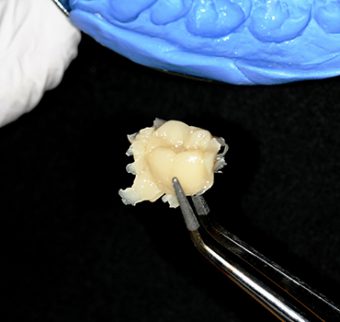
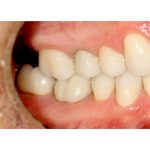
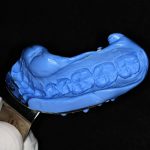
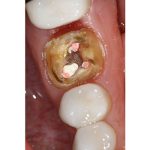
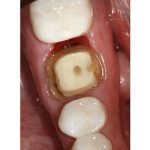
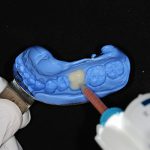
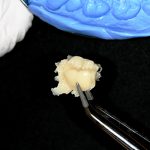
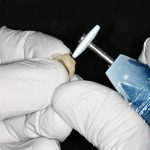
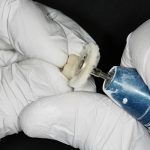
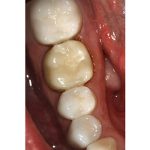
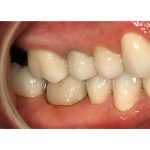
You must be logged in to post a comment.